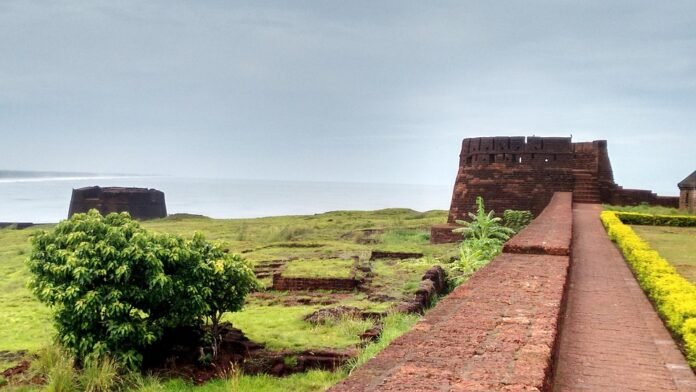Of course. Here is an article on the concept of “The Indian Century.”
The Indian Century: Why the World is Watching the Rise of a New Global Power
For decades, global narratives have been dominated by the “American Century” and the more recent, assertive rise of China. But as the 21st century unfolds, a new phrase is entering the lexicon of economists, diplomats, and strategists: The Indian Century. It’s a term that encapsulates the growing belief that India is poised to become a defining force of the next several decades.
This isn’t just aspirational rhetoric. Across the globe, from boardrooms in New York to government chambers in Tokyo, all eyes are on India. The world is watching not just a rising economy, but the awakening of a civilizational power. But why now? The answer lies in a powerful confluence of demographic, economic, geopolitical, and cultural forces that are reaching a critical mass.
1. The Demographic Dividend: A Youthful Engine
While many of the world’s major economies, including China, Japan, and much of Europe, are grappling with aging populations and shrinking workforces, India is experiencing the opposite. With a median age of just 28, India has the world’s largest youth population. This “demographic dividend” is its most potent asset.
This youthful energy translates into a massive, dynamic workforce, a burgeoning consumer market, and a generation of digital natives eager to innovate and adapt. While other nations face the economic drag of supporting a large elderly population, India is powered by the aspirations of nearly a billion people under the age of 35. This demographic advantage is the foundational pillar upon which the Indian Century is being built.
2. The Economic Elephant Awakens
For years, the Indian economy was likened to a sleeping elephant—immense in potential but slow to move. Today, that elephant is not just awake; it’s running. India is currently the world’s fastest-growing major economy, having surpassed the UK to become the fifth-largest. Projections indicate it will become the third-largest, behind only the US and China, before the end of this decade.
This growth is fueled by several key factors:
- The Digital Revolution: India has built a world-leading “digital public infrastructure.” The Unified Payments Interface (UPI) has revolutionized digital payments, processing billions of transactions monthly. The Aadhaar biometric identity system has brought hundreds of millions into the formal economy. This digital backbone is fostering unprecedented innovation in fintech, e-commerce, and service delivery.
- Manufacturing and Infrastructure Push: Initiatives like “Make in India” are aimed at transforming the country into a global manufacturing hub, offering a viable alternative to China in global supply chains. A massive, publicly-funded infrastructure drive is building highways, airports, and high-speed rail networks at a breathtaking pace, creating the physical arteries for a modern economy.
- A Thriving Startup Ecosystem: From Bengaluru to Gurgaon, India is now home to the world’s third-largest startup ecosystem. It has become a unicorn factory, producing innovative companies in sectors ranging from ed-tech and health-tech to space-tech, backed by a surge in venture capital.
3. The Great Balancer in Geopolitics
In an increasingly fractured and multipolar world, India’s unique geopolitical position is more crucial than ever. As the world’s largest democracy, it shares fundamental values with the West. This has made it a natural partner for the United States, Japan, and Australia in the Quad alliance, a strategic grouping widely seen as a counterweight to China’s influence in the Indo-Pacific.
Simultaneously, India maintains its long-held policy of “strategic autonomy.” It is a leading voice in the Global South and a key member of non-Western groupings like BRICS and the Shanghai Cooperation Organisation (SCO). This allows it to act as a diplomatic fulcrum, capable of bridging divides and maintaining relationships with all major powers, from Russia to America. In a world desperate for stability, India is emerging as an indispensable balancing force.
4. The Global Reach of India’s Soft Power
India’s influence extends far beyond economics and politics. Its soft power—the global appeal of its culture, ideas, and people—is a formidable asset.
- Culture: Bollywood films are watched from Senegal to Siberia. Yoga and meditation are practiced worldwide as symbols of wellness. Indian cuisine is a global staple.
- The Diaspora: The successful and influential Indian diaspora is perhaps its greatest ambassador. From Sundar Pichai at Google and Satya Nadella at Microsoft to countless doctors, engineers, and entrepreneurs, the global Indian has become a symbol of intellect, hard work, and success.
- Space Prowess: With a fraction of the budget of other space agencies, India’s ISRO has achieved remarkable feats, including its successful Mars Orbiter Mission and the recent Chandrayaan-3 lunar south pole landing, cementing its reputation as a hub for frugal innovation.
The Road Ahead
Of course, the path to the Indian Century is not without significant challenges. Eradicating poverty, bridging income inequality, improving its creaking urban infrastructure, and navigating bureaucratic hurdles remain monumental tasks. Environmental sustainability and creating enough jobs for its millions of young people are critical tests that lie ahead.
However, the momentum feels undeniable. For the first time, the narrative is not just about India’s potential, but about its performance. The world is watching because India offers a compelling, alternative model for development—one that is democratic, digitally-driven, and deeply rooted in its own unique civilizational identity.
The script for the 21st century is still being written, and India is holding a very powerful pen. The world isn’t just watching; it’s engaging with a nation that is not just rising, but is set to reshape the global order.

